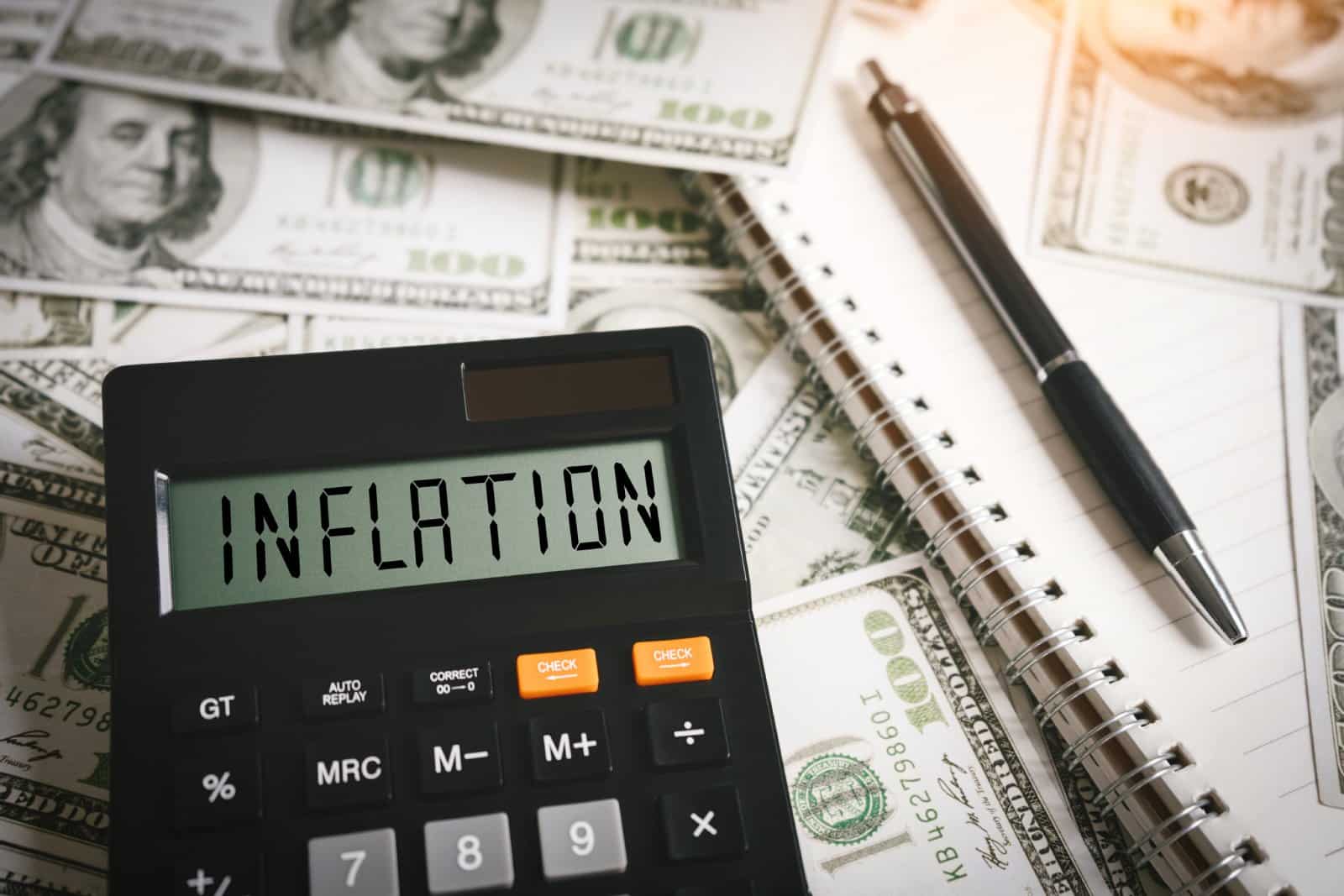
by Grant Gallacher | Finance Pulse
Sam Bankman-Fried’s downfall is complete, as he has been found guilty of money laundering and wire fraud. Here’s the whole story.
Sam Bankman-Fried Found Guilty
In a Manhattan federal court, Sam Bankman-Fried, the founder of the now-bankrupt cryptocurrency exchange FTX, has been found guilty of defrauding his customers. He faces seven counts of wire fraud and conspiracy to launder money.
The verdict came after nearly a month of court proceedings. Bankman-Fried’s sentencing hearing is scheduled for March 28, 2024.
Bankman-Fried, who admitted to “large mistakes” in his management of FTX, including not putting a risk management team in place, had maintained his innocence throughout the trial.
Prosecutors accused him of swindling FTX customers out of approximately $10 billion, primarily through activities from 2019 to November 2022.
Used “Stolen Funds” for Personal Gain
The key element of the fraud was the lending of customer funds to Alameda Research, FTX’s sister hedge fund, without informing the customers. This practice ultimately led to FTX’s collapse due to a liquidity crisis.
Bankman-Fried allegedly used these “stolen funds” to enrich himself and support Alameda’s high-risk investments. This lavish spending included significant political contributions, celebrity endorsements, and personal expenses like a $200 million property in the Bahamas.
Bankman-Fried was accused of stating “I don’t recall” to evade prosecutors’ questions. However, his prior public statements contradicted his claims. One such statement he admitted to saying, “**** regulators” to a journalist.
During the trial, members of Bankman-Fried’s inner circle testified against him. His former girlfriend and CEO of Alameda, Caroline Ellison, said he had directed her to commit these crimes.
“One of the Biggest Financial Frauds in American History”
Other witnesses, including Gary Wang and Nishad Singh, who were associated with FTX, also implicated Bankman-Fried in the financial wrongdoing.
Bankman-Fried’s attorney portrayed him as a “math nerd” who acted in good faith in his efforts to run FTX and Alameda, shifting some blame onto Ellison and a rival cryptocurrency exchange, Binance, for FTX’s collapse.
Manhattan US attorney Damian Williams commented on the case, calling it “one of the biggest financial frauds in American history” and a stark reminder that despite the relatively new cryptocurrency industry, “this kind of corruption is as old as time.”
Williams promised to pursue financial market corruption relentlessly, sending a clear warning to potential fraudsters.
Complexities of Regulation in the Cryptocurrency Industry
Bankman-Fried’s legal troubles are far from over, as he is set to face a second set of charges, including alleged foreign bribery and bank fraud conspiracies.
Despite his conviction, this case highlights the ongoing challenges and complexities associated with the regulation and oversight of the cryptocurrency industry.
Online, the news of the conviction led to ridicule of Bankman-Fried and his downfall. One user posted, “The trial took over a month, but it only took the jury 4 hours to find him guilty on all counts. That says it all.”
Another user joked about the former crypto billionaires’ apparent lack of self-awareness. They commented, “Having a group chat titled ‘wire fraud’ didn’t help.”
More From Thrifty Guardian
Thousands of Children of Illegal Immigrants May Be Deported: US Supreme Court Decides Fate of “Dreamers”
Ramaswamy Would End “Birthright Citizenship”: Believes Illegal Immigrants Should Be Deported as a Family Unit
The post “Having a Group Chat Titled ‘Wire Fraud’ Didn’t Help” – Sam Bankman-Fried of Bankrupt Cryptocurrency Exchange Guilty of Money Laundering first appeared on Thrifty Guardian.
Featured Image Credit: Shutterstock / lev radin

by Mark Garro | Finance Pulse
The burden of student loans has long been a persistent thorn in the side of countless Americans. The Biden administration has taken significant steps to alleviate this burden, yet challenges persist.
Initial Forgiveness Plan
President Joe Biden initially proposed a massive student loan forgiveness plan, only for it to be declared unconstitutional by the Supreme Court. This ambitious plan aimed to eliminate a substantial portion of debt for nearly every federal student loan borrower.
The ongoing pandemic led to multiple extensions of the loan payment moratorium. However, pressure from congressional Republicans eventually forced the resumption of loan collections, leading to penalties on servicers mishandling the restart.
A Second Attempt
Undeterred, the Department of Education recently announced a new initiative to forgive billions in loans for struggling borrowers. This Plan B hopes to successfully liberate individuals who have been under the weight of monthly payments for decades.
The Supreme Court’s previous ruling deemed the initial forgiveness plan excessively broad and unsupported by clear legal authority. This new plan attempts to bypass these concerns by targeting specific borrower groups in need.
Targeting the Overburdened
The new plan offers relief to individuals owing more than their original borrowed amount due to interest accumulation. The principal remains, but borrowers would reset and start paying down their principal balances.
Those who have had outstanding payments for over 25 years would see their balances entirely cleared. This mirrors private lenders’ practice of writing off irrecoverable loans.
Aid for Public Servants
People eligible for forgiveness under federal programs benefiting public servants but who haven’t applied due to bureaucratic hurdles are also addressed in the new plan.
Borrowers saddled with debt from job-oriented programs that failed to lead to well-paying careers, especially those from for-profit colleges, would find their loans wiped out.
Notably, individuals with federal loans through private banks, excluded from the initial plan, are considered candidates for forgiveness in this new approach.
Defining Financial Hardship
The Department of Education is exploring the creation of a category for borrowers facing “financial hardship,” taking into account various financial challenges from medical expenses to age.
Even if successful, implementing the new plan will be time-consuming, with a rulemaking process extending into 2024 and forgiveness likely not occurring until 2025.
Supreme Court Hurdles
The Supreme Court remains a significant potential obstacle, given its prior stance against expansive interpretations of federal statutes related to loan forgiveness.
For those with student loans yet to commence payments, particularly low-income individuals, enrolling in the new SAVE program can be beneficial. This program caps monthly payments and offers forgiveness on some smaller loans within ten years.
The new plan signifies a departure from universal loan forgiveness. While the idea gained traction within the Democratic Party, opposition from the Supreme Court has necessitated more targeted approaches.
An Expansive Effort
Even in its limited form, Biden’s loan forgiveness agenda represents a considerable leap from previous policies, marking a substantial effort to address the student loan crisis.
The administration has had to prioritize certain groups for loan forgiveness due to legal limitations. Future forgiveness plans will likely require overcoming the skepticism of a conservative-majority Court.
While the path to student loan relief remains fraught with challenges, these efforts by the Biden administration signal a commitment to seeking solutions to bring relief to those burdened by student debt.
More From Thrifty Guardian
Thousands of Children of Illegal Immigrants May Be Deported: US Supreme Court Decides Fate of “Dreamers”
Ramaswamy Would End “Birthright Citizenship”: Believes Illegal Immigrants Should Be Deported as a Family Unit
The post Biden’s New Targeted Student Loan Relief Plan Aims to Alleviate Borrower Burden first appeared on Thrifty Guardian.
Featured Image Credit: Shutterstock / Consolidated News Photos

by Mark Garro | Finance Pulse
In an ambitious move, the United States is set to announce a series of economic initiatives to support countries in the Western Hemisphere that host migrants. This decision comes amid ongoing efforts to streamline regional supply chains and manage migrant arrivals at the U.S.-Mexico border.
Americas Partnership for Economic Prosperity
President Joe Biden is expected to meet leaders from Latin America and the Caribbean at the Americas Partnership for Economic Prosperity (APEP) Leaders’ Summit to deliberate on economic and migration issues.
This summit comes on the heels of a similar meeting held in Los Angeles last year, emphasizing the intent to solidify economic relations within the Western Hemisphere.
Leaders from several countries, including Barbados, Canada, Chile, and Colombia, are expected to join the discussion along with representatives from Mexico and Panama.
Financing Platform With IDB
In collaboration with the Inter-American Development Bank (IDB), the U.S. aims to establish a financing platform catering to middle- and higher-income countries in the region.
The proposed IDB financing platform will encompass funds from private sectors and other donors, aiming to enhance the economic conditions within the region.
The U.S. seeks to construct competitive regional supply chains that can stand against markets like China.
Focus On Various Sectors
Officials suggest that clean energy, semiconductors, and medical supplies are potential sectors where the region could thrive globally.
Countries may explore options such as Colombia’s green bonds and the U.S.’s recent debt for climate swap initiative for Ecuador.
Addressing Migrant Issues
The surge in migrants at the southwest border has led to critiques from Republicans and Democratic mayors concerning the strain on resources for housing and food.
Mayors from various cities have appealed to President Biden for federal funding and swifter work permits for migrants. Chicago Mayor Brandon Johnson highlighted the urgency of federal support in light of the approaching colder weather.
Biden’s administration is exploring legal pathways to the U.S. while implementing measures to curb illegal border crossings.
Refugee Resettlement Program
Three Venezuelan families were recently admitted as refugees through a new migrant processing office in Colombia, allowing them a path to U.S. citizenship.
The administration plans to extend migrant processing through centers known as Safe Mobility Offices located in countries such as Guatemala and Costa Rica.
Congressional Funding Request
The Biden administration is urging Congress to allocate additional funds for border security and initiatives to support deportations by other countries.
Panama has shown interest in enhancing migrant screening and deportations, contingent on the availability of funds.
By fostering collaboration and economic cooperation, the initiative aims to create a sustainable environment that benefits both the U.S. and its neighbors in the Western Hemisphere.
More From Thrifty Guardian
Thousands of Children of Illegal Immigrants May Be Deported: US Supreme Court Decides Fate of “Dreamers”
Ramaswamy Would End “Birthright Citizenship”: Believes Illegal Immigrants Should Be Deported as a Family Unit
The post Biden Unveils Bold Economic Incentives to Host Nations in Response to the Migrant Surge first appeared on Thrifty Guardian.
Featured Image Credit: Shutterstock / Drop of Light

by Mark Garro | Finance Pulse
New York’s reputation as America’s financial powerhouse is under threat. High taxes and a less-than-friendly business environment have driven away high-earning residents, putting the state’s financial industry—and by extension, its economy—at risk.
The Empire State’s Decline

Image Credit: Shutterstock / Lumen Photos
New York is seeing a drop in its financial prowess. A recent study shows that the state’s status as a hub for finance is in jeopardy.
Money Migrating to Other States

Image Credit: Shutterstock / PeopleImages.com – Yuri A
The top states attracting new, high-paying financial jobs are Texas, Florida, North Carolina, and Georgia. New York ranks a low 36th in job growth in this sector.
Job Loss Impact

Image Credit: Shutterstock / sakoqwakestock
Losing finance sector jobs isn’t just an industry problem. Each job lost in finance can lead to almost three more lost in other sectors, affecting the broader economy.
A Call to Action

Image Credit: Shutterstock / fizkes
Experts say this situation needs immediate attention. It’s a wake-up call for New York to improve its competitive edge in the finance industry.
Sky-High Salaries

Image Credit: Shutterstock / NATNN
Workers in New York’s financial services have the highest average pay package in the country. It stands at $309,000 annually.
People Are Leaving New York

Image Credit: Shutterstock / Krakenimages.com
Population decline is becoming a serious issue. New York saw a 2.7% decrease from 2019 to 2022, the worst among all states during the pandemic.
Exodus of Wealthy Residents

Image Credit: Shutterstock / zstock
The decline in population isn’t uniform. New York City and its suburbs, home to the state’s wealthiest residents, have been the hardest hit.
Manhattan’s $11 Billion Loss

Image Credit: Shutterstock / pixs4u
Manhattan alone saw a flight of nearly $11 billion in gross income, confirming that the wealthiest are indeed leaving the area.
Florida Gains at New York’s Expense

Image Credit: Shutterstock / pathdoc
In 2021, New York saw a net income loss of $9.8 billion that migrated to Florida. Taxes are the likely reason for this shift.
The Tax Situation

Image Credit: Shutterstock / enciktepstudio
New York has the highest combined state and local tax rate on residents. In contrast, Florida has the lowest, making it a more attractive option for high-earners.
The Death Tax

Image Credit: Shutterstock / Ultraskrip
New York is among the few states that tax estates, commonly called the “death tax.” High-wealth individuals consider this when choosing a state to reside in.
Action Is Necessary

Image Credit: Shutterstock / Ground Picture
The situation is dire. If New York doesn’t address these issues, it risks losing its finance industry, one of its most crucial economic pillars.
What’s at Stake

Image Credit: Shutterstock / Vitalii Vodolazskyi
The financial health of New York is in peril. If the finance and insurance industry declines, it could have a cascading effect on other sectors and the state’s economy as a whole.
The State’s Path Forward

Image Credit: Shutterstock / Ron Adar
New York needs to focus on lowering taxes, improving its business climate, and making the cost of living more manageable to retain its financial dominance.
Why Locals Should Care

Image Credit: Shutterstock / Cookie Studio
The declining financial industry isn’t just a Wall Street issue. The ripple effect could lead to job losses and a reduced quality of life for all New Yorkers.
Time for a Turnaround

Image Credit: Shutterstock / El Nariz
New York is at a critical point. A focused and forceful strategy is required to ensure the Empire State remains a financial leader, not just nationally but globally. This isn’t just a state problem; it’s an issue that impacts us all.
More From Thrifty Guardian
Thousands of Children of Illegal Immigrants May Be Deported: US Supreme Court Decides Fate of “Dreamers”
Ramaswamy Would End “Birthright Citizenship”: Believes Illegal Immigrants Should Be Deported as a Family Unit
The post New York’s Financial Supremacy on the Line: High Taxes and Wealthy Residents Fleeing Threaten the Empire State’s Economy and the Livelihoods of its Residents first appeared on Thrifty Guardian.
Featured Image Credit: Shutterstock / Norman Chan

by Keegan Leighty | Finance Pulse
The United Auto Workers have struck a monumental deal with Detroit’s Big Three automakers. While it’s a clear win for UAW workers, the broader impact on the economy and car buyers remains uncertain.
Substantial Gains for UAW Workers

Image Credit: Shutterstock / Ann Rodchua
The new contracts propose significant wage increases. Brandon Bell, a Ford worker, anticipates his hourly rate to jump from $20 to $35 by December.
More Than Just Money

Image Credit: Shutterstock / tokar
These negotiations aimed to restore the status of auto plant jobs as a pathway to a secure, middle-class life. The UAW focused on recovering lost pay and benefits, making these roles more attractive and stable.
The Cost for Automakers

Image Credit: Shutterstock / rtbilder
Higher labor costs are a challenge for the Big Three, who already face stiff competition from non-unionized rivals.
A Certain Disadvantage

Image Credit: Shutterstock / docstockmedia
“It certainly is a disadvantage,” says Tom Narayan, an RBC Capital analyst, though he doesn’t see it as a major setback.
Ripple Effects Across the Industry

Image Credit: Shutterstock / Andrey_Popov
The UAW’s success will likely pressure non-unionized companies to increase pay. Ann Marie Uetz, an industry lawyer, notes, “It’s a super tight labor market right now — very tough to get skilled labor.” This could lead to higher costs throughout the automotive sector.
Impact on Car Buyers and Prices

Image Credit: Shutterstock / Gorodenkoff
Ford anticipates the new deal adding $850-900 to the cost of making each vehicle. Jonathan Smoke, Cox’s chief economist, points out that passing these costs to consumers won’t be easy, given the existing challenges with car affordability.
Broader Economic Implications

Image Credit: Shutterstock / XArtProduction
These contracts inject significant money into communities around UAW plants, potentially boosting wages in other sectors. However, the downside includes possible inflationary pressures and challenges for the Federal Reserve’s economic strategies.
A Risk of Job Migration and Automation

Image Credit: Shutterstock / fizkes
The lucrative nature of these contracts could prompt companies to move jobs to lower-cost regions or invest more in automation. This is a concern for workers, though Patty Ellison, a former Stellantis worker, sees it as “just the nature of the business.”
UAW’s Ambitious Leadership

Image Credit: Shutterstock / fizkes
Shawn Fain, the UAW’s new president, is positioning these contracts as part of a larger struggle for worker rights, targeting foreign automakers and Tesla.
Challenges and Opportunities in the South

Image Credit: Shutterstock / fizkes
The UAW has had little success in unionizing foreign automaker plants in the South, but with new leadership and a favorable climate for workers’ rights, they’re hoping for a change.
Potential Impacts Beyond Unionized Plants

Image Credit: Shutterstock / fizkes
Companies like Toyota have already started increasing wages, likely in response to the UAW’s actions, even in plants where the union doesn’t have a presence.
Tesla: A Tough Nut to Crack

Image Credit: Shutterstock / TY Lim
Unionizing Tesla remains a significant challenge, with factors like employee stock options and Elon Musk’s anti-union stance complicating efforts.
The Big Picture: Auto Industry’s Transformation

Image Credit: Shutterstock / fizkes
As the Big Three navigate these new labor costs, they are also racing to catch up with Tesla in the burgeoning EV market.
Don’t Have Much to Worry About

Image Credit: Shutterstock / Vladimir Borovic
Brandon Bell, capturing the sentiment of UAW workers facing a brighter financial future says, “All the prices and cost of living has gone up so much. I don’t have to worry about it as much now.”
More From Thrifty Guardian
Thousands of Children of Illegal Immigrants May Be Deported: US Supreme Court Decides Fate of “Dreamers”
Ramaswamy Would End “Birthright Citizenship”: Believes Illegal Immigrants Should Be Deported as a Family Unit
The post A Union’s Triumph: How United Auto Worker’s Strike Will Change the Future of the Auto Industry first appeared on Thrifty Guardian.
Featured Image Credit: Shutterstock / Jon Rehg

by Joe Lysikatos | Finance Pulse
In a surprising turn of events, top European bank UBS is sounding the alarm, forecasting a looming recession for the United States in 2024. According to their recent analysis, this economic downturn is poised to trigger a substantial response from the Federal Reserve, with interest rate cuts that could be nearly four times more aggressive than what the market currently anticipates.
The Forecast: An Unprecedented 275 Basis Point Cut

Image Credit: Shutterstock / Comdas
UBS delivered a bold prediction, suggesting that the Federal Reserve will respond to the impending economic challenges with an unprecedented interest rate cut of 275 basis points (a way to measure small changes in interest rates, where one basis point equals 0.01%, making discussions about tiny shifts more straightforward).
Beyond Expectations.

Image Credit: Shutterstock / AJR_photo
This projection, revealed in a research note led by economist Arend Kapteyn and strategist Bhanu Baweja, far surpasses the market’s expectation of a 75-basis-point reduction, as indicated by the CME Group’s Fedwatch tool.
March 2024 Unveils Pronounced Fed Easing Cycle

Image Credit: Shutterstock / fizkes
Describing a key aspect of UBS’s forecast, the team noted, “One of the key features of UBS’s forecast is the very pronounced Fed easing cycle seen unfolding from March 2024 onwards.”
Economists Speak

Image Credit: Shutterstock / Ljupco Smokovski
They anticipate rates plummeting to a mere 1.25% in the first half of 2025, reflecting a strategic move by the Federal Reserve to counteract the anticipated recession slated for the second and third quarters of 2024.
Reasons Behind the Projections

Image Credit: Shutterstock / Cookie Studio
The UBS team attributed their forecast to a combination of falling inflation rates and a broader economic slowdown. The expected recession, they argue, will prompt the Federal Reserve to initiate this drastic easing cycle.
Fed’s Strategic Move

Image Credit: Shutterstock / Halfpoint
The easing cycle is seen as a preemptive measure to mitigate the impact of the economic downturn on both headline and core inflation.
From Tightening to Easing

Image Credit: Shutterstock / Inside Creative House
This comes on the heels of the Federal Reserve’s efforts since March 2022 to raise borrowing costs from near-zero to approximately 5.5%, aiming to curb soaring inflation.
Inflation Dynamics

Image Credit: Shutterstock / Deemerwha studio
Despite hitting a four-decade high of 9.1% in June of the previous year, inflation has started to cool. However, it remains significantly above the central bank’s 2% target.
U.S. Economic Landscape

Image Credit: Shutterstock / LightField Studios
The tightening campaign initiated by the Federal Reserve was expected to weigh on the economy. However, the United States has managed to avoid a recession thus far.
Robust Q3 Growth Contrasts With UBS’s Recession Warning

Image Credit: Shutterstock / beeboys
The third quarter of the year witnessed a robust expansion of 4.9% in the country’s gross domestic product, marking the highest growth rate in two years.
Job Market Resilience

Image Credit: Shutterstock / fizkes
The job market has also demonstrated resilience in the face of the Fed’s interest rate hikes.
Despite a slight uptick in the unemployment rate in recent months, it still hovers below 4%.
Conflicting Views

Image Credit: Shutterstock / Stasonych
The recent recession prediction by Kapteyn and Baweja appears to contradict an earlier outlook from UBS’s head of asset allocation for the Americas, Jason Draho.
UBS’s Jason Draho Envisions ‘Roaring ‘20s’ Amid U.S. Economic Resilience

Image Credit: Shutterstock / TheVisualsYouNeed
In a presentation earlier this month, Draho painted a different picture, suggesting that the surprising resilience of the U.S. economy in the current year could set the stage for a “roaring ’20s” period characterized by higher GDP growth, inflation, bond yields, and interest rates.
Eyes on the Fed

Image Credit: Shutterstock / Cast Of Thousands
As these conflicting views unfold, all eyes will be on the Federal Reserve’s actions in the coming months and how the U.S. economy navigates the challenges on the horizon.
Federal Reserve’s Dilemma

Image Credit: Shutterstock / insta_photos
UBS’s bold forecast, if realized, could reshape the economic landscape and have far-reaching implications for businesses, investors, and households across the nation. Stay tuned for updates as the situation evolves..
More From Thrifty Guardian
Thousands of Children of Illegal Immigrants May Be Deported: US Supreme Court Decides Fate of “Dreamers”
Ramaswamy Would End “Birthright Citizenship”: Believes Illegal Immigrants Should Be Deported as a Family Unit
The post Predicted Recession for the US in 2024, UBS Anticipating Drastic Interest Rate Cuts first appeared on Thrifty Guardian.
Featured Image Credit: Shutterstock / Michael Derrer Fuchs



















































